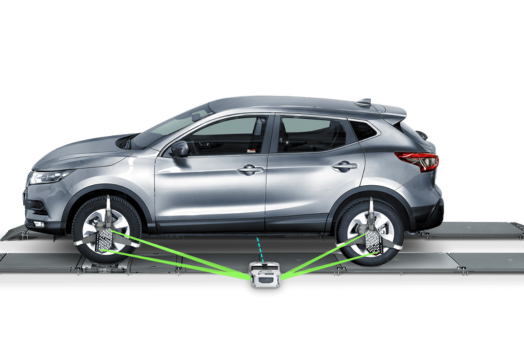This site uses cookies to ensure you get the best experience. Learn more.
Toggle Nav

A vehicle's wheel alignment plays a vital role in ensuring a smooth and safe journey. Over the years, advancements in technology have transformed the once-manual wheel alignment process into a precision-driven endeavour. From the practicality of the laser systems to the sophisticated 3D alignment technology, the automotive industry has witnessed a remarkable evolution that has significantly improved efficiency and accuracy, but all wheel alignment technology has their place and popularity in the market for different reasons.
According to the latest GEA Market Statistics (2022) still the largest proportion of wheel alignment sales were for laser alignment system:
Representing 41% of sales recorded
CCD and camera system represented 35%
Image/3D technology representing 24%.
However, as we enter into Q4 of 2023, will increased demand for sophisticated wheel alignment services and proven improvements in 3D technology increase sales proportions for these more advanced solutions?
The journey of precise wheel alignment technology, still used today, really began with the introduction of laser systems. Mechanics use simple lasers and visual indicators to measure the angles and orientations of a vehicle's wheels. This traditional and manual method of wheel alignment is widely used and preferred by many technicians today, due to its simplicity. Understanding the foundations of wheel alignment geometry and how to calculate can form the basis of offering great customer service within the garage. Whilst the technology has remained pretty much the same, there are many different systems variations still out in the market today.
The next stride in the alignment technology evolution came with the form of CCD (Charge-Coupled Device) alignment systems. This technology uses cameras and sensors to capture real-time images of the wheels' positions, allowing for more a more accurate, less manual measurement. With most CCD systems operating a database of vehicle wheel alignment specifications, real-time measurements can be seen against manufacture specifications, this upgrade in technology offers simplicity for those operating it. The ability to print and save customer wheel alignment data is what really helped drive the popularity of CCD.
These systems utilise advanced cameras and sensors to create a three-dimensional model of the vehicle's alignment parameters. This technology provides a comprehensive view of camber, caster, and toe angles, allowing mechanics to identify even the slightest misalignments, achieved with speed and efficiency. Additionally, the visual representation of the alignment data simplifies communication between mechanics and vehicle owners, enhancing transparency and trust.
All wheel alignment technology from laser, to CCD to 3D all have a place in a modern garage and a its suitability relies on many factors, including the number of wheel alignments done within the business, the vision for wheel alignment as a part of the mix moving forwards, the type of vehicles being serviced, preferences of the mechanics using them, customers request for visual proof of the service and inevitably price and more importantly return on investment.
Straightset are uniquely positioned to offer genuine choice and flexibility to our customers when it comes to wheel alignment equipment. With reliable laser and CCD technology from Supertracker, to the latest innovative Q.Lign 3D technology from Beissbarth, Straightset can advise on the right wheel alignment solution for your needs. For more information view our website at www.straightset.co.uk or email us at [email protected].